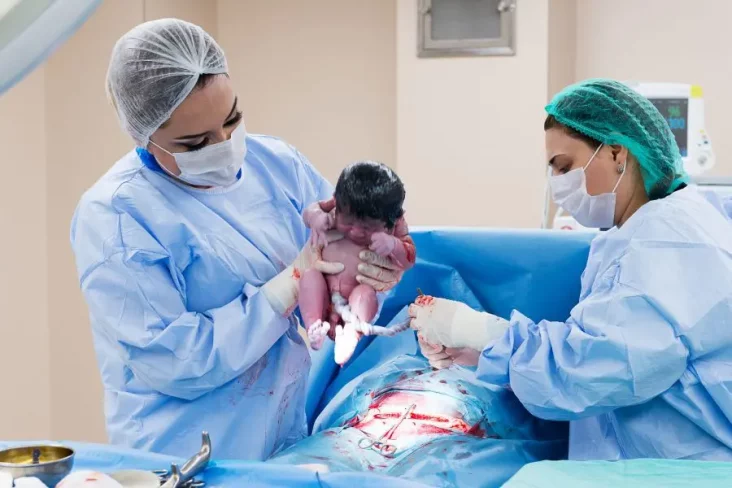Most likely, your main worry when you’re pregnant is having a healthy baby. Additionally, a vaginal delivery can be part of your birth plan. A cesarean section might, nevertheless, be the best choice in some circumstances.
Sometimes a C-section is the only choice because your doctor can quickly deliver your baby through incisions in your belly and uterus — in only a few minutes if necessary.
C-sections are frequently scheduled ahead of time for a variety of reasons, such as if you’re expecting multiples. However, in certain situations, they turn into vital life-saving techniques.

Why a C-section is Needed in an Emergency
If you require an emergency C-section, your doctor has determined that the only course of action is an immediate delivery because either you or the baby are in grave danger. Several factors could necessitate an urgent cesarean:
- Fetal or maternal distress
- A protruding umbilical cord (the umbilical cord drops through your cervix into your vagina ahead of your baby)
- Hemorrhage in mothers
- Placenta abruption (the placenta peels away from the wall of your uterus)
- Uterine rupture (your uterus tears along a previous C-section scar)
the causes of an unplanned C-section
Although the terms are frequently used interchangeably, an emergency C-section differs from an unscheduled C-section. Unplanned cesareans are still regarded as urgent procedures, although usually neither the mother nor the baby are in danger of dying. Typical reasons for an unscheduled, urgent C-section could be:
- Labor isn’t moving forward.
- Contractions are not strong enough.
- Baby isn’t coping with labor well.
- When labor starts, the baby is breech or sideways.
C-section Procedure
Time is of the essence during a C-section emergency. Because your life or the life of your baby could be in risk, the objective is to get your baby out as quickly as you can. From the start of operation to delivery, it may only take one minute.
Your anesthesiologist may have time to administer you enough medication through your epidural if you had one while attempting vaginal delivery so you can be awake for the C-section. If you didn’t get an epidural, your doctor might have to put you under general anesthesia, which would keep you from being conscious during the birth. When you wake up, you’d get to meet your baby.
Non-emergency C-sections, such as those done because labor hasn’t progressed as expected, typically start within 30 to 60 minutes of your doctor’s choice. You’ll probably get to greet your kid right away through this C-section while you’re still awake. So that you won’t experience any pain, you’ll either receive a spinal anesthetic, an epidural, or a combined spinal-epidural anesthesia (CSE).
C-section Risks
Emergency cesareans come with different dangers than routine ones, such as a higher risk of severe hemorrhage, difficulties from a hastily administered anesthetic, and unintentional harm to you or your child.
See also: During a Vaginal Delivery, What to Expect




22 Pings & Trackbacks
Pingback:Fertility Awareness Method - Babies Daily News
Pingback:7 Months Pregnant in Weeks - Babies Daily News
Pingback:canadian pharmacy cialis 20mg
Pingback:keflex where to buy
Pingback:50 mg zoloft pregnancy
Pingback:overdose on cymbalta
Pingback:is fluoxetine a narcotic
Pingback:cephalexin treat yeast infection
Pingback:amoxicillin and clavulanate potassium tablets
Pingback:neurontin for sleeping aid
Pingback:how does flexeril work
Pingback:do you stop allopurinol during a gout attack
Pingback:celecoxib brand name
Pingback:ashwagandha powder dosage
Pingback:celexa and alcohol
Pingback:robaxin methocarbamol
Pingback:rosuvastatin ezetimibe clinical trials
Pingback:is flomax the same as tamsulosin
Pingback:tizanidine and hydrocodone
Pingback:synthroid 188
Pingback:actos guerrilleros
Pingback:ivermectin 3mg